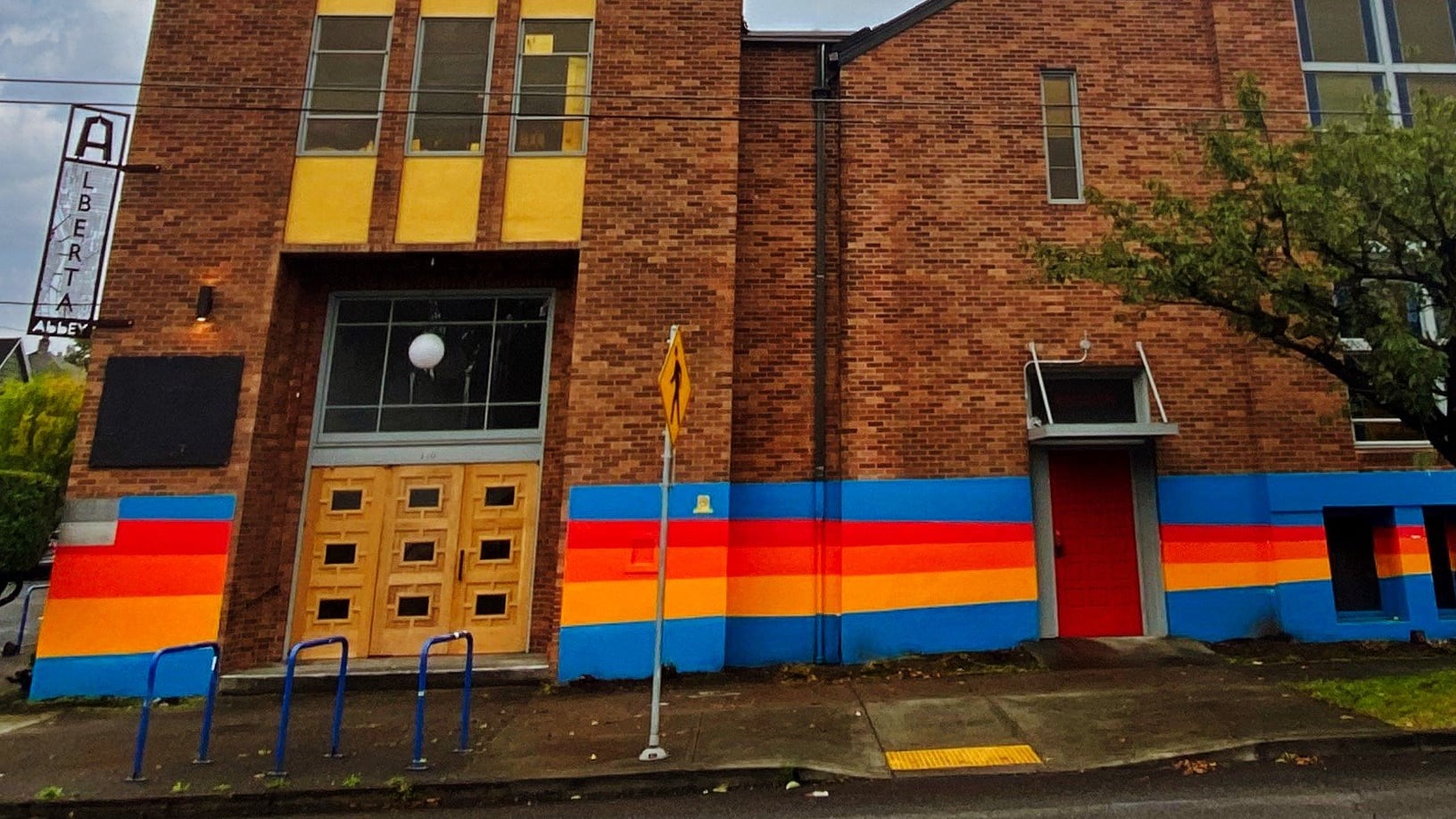While Portland has no shortage of deconsecrated temples-turned-breweries and -playhouses, the resulting spaces too often embrace the worst qualities of their former use in order to showcase a stilted fussiness like so much stained glass. (Most concerts, all that separates The Old Church from an old church are the hours of operation and overpriced Chablis.) Even during its darkest hours, when moonlighting as an overburdened resource for a blighted community or rudderless dormitory for mismatched creatives, the bustling site at Northeast Alberta Street and Mallory Avenue was never so easily defined. And, somehow, newly re-rebranded as a comfortably luxe, all-inclusive performance hall, the latest incarnation of Alberta Abbey has found itself at last.
“This isn’t like any other venue space,” says Alberta Abbey Foundation board member and University of Oregon art professor Brian Gillis. “It’s really trying to be for everybody, and you’ll see that in the programming—everyone from the Jerry Garcia Band to Alonzo Chadwick to 20-year-olds rapping at drop-in cyphers. We’re in the process of developing a curriculum to teach music and lighting and stage design. We’re starting to get grants and make money off of shows. The concept has been proven. It’s a nonprofit foundation in place to serve BIPOC/underrepresented groups and be a resource for the community, and that’s what so exciting—our mission’s shaped by the concerns of the day.”
In all honesty, Alberta Abbey has long been driven by both its commitment to egalitarian principles and a certain flair for showmanship. Originally founded as a sort of Jazz Age megachurch by merging progressive congregations who commissioned construction plans from the ecclesiastical architect behind Hollywood’s holiest landmarks, only the lavish basement had been completed when the Depression forced building to halt. Over the following two decades, parishioners held all services within the cavernous art deco ballroom until a proper church was finally finished.
Those subterranean hardwoods and 25-foot ceilings were repurposed in the 1980s as a full-court gym, where a young Damon and Salim Stoudamire prepped for NBA careers. Then, in the 2000s, the space became an impromptu shelter for the unhoused and recently incarcerated. These days, Third Rail Repertory Theatre uses the former Sunday school classrooms for offices, and visual artists forge studios from the two-story tower, while the restored ballroom occasionally hosts dance nights.
“We keep finding these secret hallways and interesting little places,” Gillis marvels. “At the back of the stage, there’s a hallway leading to this Jacuzzi-size tin box set 10 feet up behind a window facing the theater for baptisms that the whole congregation could see.”
Though the plumbing has been disabled, it’s still regularly used by various acts and exhibitions.
“With the shows we’ve been putting on, all sorts of crazy things happen—light, sculpture, dancers were all up there last Halloween as part of their performance. I can only imagine how much fun kids would’ve had running around this space during after-school programs. There’s just so much cool stuff!”
See the rest of Willamette Week’s Best of Portland 2023 here!

